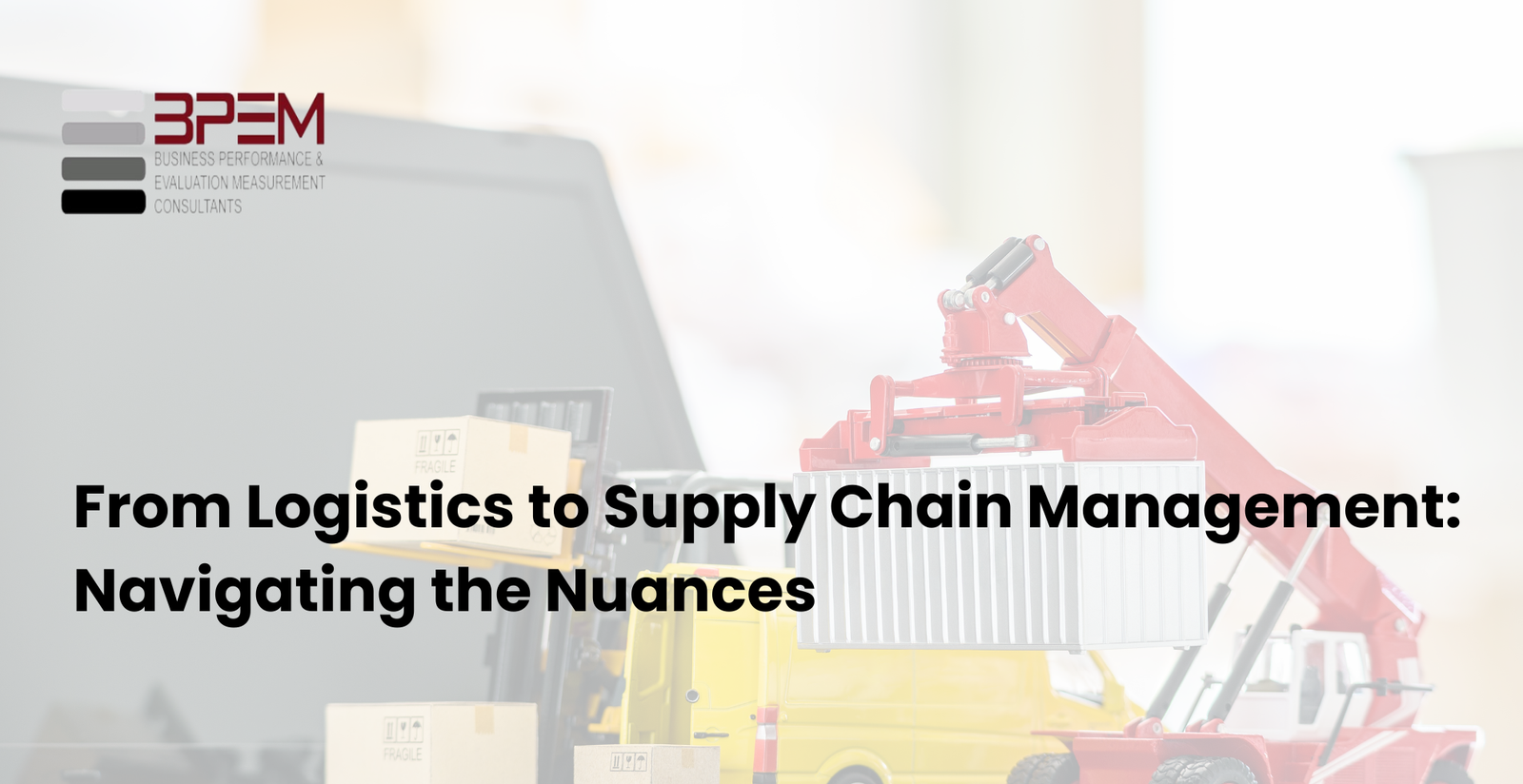
From Logistics to Supply Chain Management: Navigating the Nuances
In the present globalized economy, proficient administration of goods and services from a starting place to a final destination is fundamental for organizations to flourish. With the progress from conventional strategies to supply chain management, the executives address a change in perspective in how associations approach the development and coordination of goods, data, and funds.
Logistics, traditionally seen as the most common way of moving products starting with one area and then onto the next, has developed into a more extensive idea known as supply chain management (SCM). While logistics focuses primarily on the physical movement of goods, SCM includes an all-encompassing methodology that incorporates different components like procurement, manufacturing, distribution, and customer support.
Table of Contents

Logistics and Supply Chain Management: Are They the Same?
In a nutshell, while logistics is an integral component of supply chain management (SCM), it’s just a part of the larger SCM ecosystem. Think of logistics as the gears in a clock, vital for function, while SCM is the entire clock, ensuring every component works harmoniously.
A Plunge into the World of Logistics: What It Involves
Logistics zeroes in on the transportation and storage of goods. Key elements include:
a) Transportation: How are goods moved from point A to B? This can encompass everything from shipping to airfreight.
b) Warehousing and Storage: Where are goods stored prior to being sold or used?
c) Inventory Management: Tracking products to ensure demands can be met without excessive stock.
d) Order Fulfillment: Ensuring products reach the consumer post-purchase.
e) Distribution: The strategy behind getting products to retailers or consumers.
Supply Chain Management: The Broader Picture
SCM goes beyond just moving and storing products. It’s about the total progression of goods, right from raw materials to the final result in consumers’ hands. Components include:
a) Planning and Forecasting: Anticipating demand to adjust production.
b) Procurement: Sourcing raw materials.
c) Production: Manufacturing or assembling the final product.
d) Logistics: (As defined above)
e) Returns Management: Handling product returns and recycling.

From Logistics to Supply Chain Management: Navigating the Nuances
Linking Logistics and SCM: The Seamless Connection
Logistics ensures the efficient movement and storage of goods, a subset of the broader supply chain strategy. SCM involves orchestrating the entire flow, including production, sales, and post-sale. Logistics is the bridge connecting the creation and utilization of products, making it a central part of SCM.
Exploring FAQs: Clearing Normal Confusions
Q: If I have my logistics sorted, is my supply chain managed effectively?
A: Not necessarily. Logistics is crucial, but effective SCM also involves managing suppliers, production, sales strategies, and after-sales.
Q: Are the tools used for logistics and SCM the same?
A: There’s overlap, especially in areas like inventory management. However, SCM tools also handle aspects beyond logistics, such as supplier relationships and production planning.
Q: Is SCM only for large companies?
A: No. Even smaller businesses benefit from understanding their supply chain, ensuring efficiency from sourcing to sales.
Key Steps in Transitioning from Logistics to Comprehensive SCM
- Holistic Assessment: Understand your current logistics processes in-depth.
- Supplier Collaboration: Build strong relationships with suppliers to ensure seamless flow of raw materials.
- Integrate Technology: Employ SCM tools that offer real-time insights, from procurement to sales.
- Enhance Inventory Management: Go beyond basic logistics tools to forecast demand more accurately.
- Consistent Learning: The universe of SCM is always developing. Stay updated with trends and best practices to optimize your supply chain.
Conclusion
In synopsis, while coordinated logistics assume a critical part in moving and storing goods, the supply chain management offers a full-scale view, coordinating each step from raw materials to the completed item arriving at customers. Perceiving the distinctions and complexities of each can altogether upgrade operational efficiency and business achievement. This guide expects to be a venturing stone in that excursion, explaining the world of logistics and supply chain management for organizations and enthusiasts alike.
Don't Stop Here
MORE TO EXPLORE

Governmnent Tender/Bids
Unlocking Opportunities: Empowering Efficiency and Success in Government Tenders – Your Back Office Solution.

Integration of AI in Data Sciences
Our application of AI in data science is used for accelerating the development of highly accurate models for predicting outcomes and patterns in data, as well as automation and machine learning.

Back Office
Calling
Seize Every Opportunity: Elevate Sales, Bookings, and Appointments with our Dynamic Back Office Calling Solutions Service.
For Other Services
Connect with us here

Digital Marketing
Services
Elevate your brand through tailored digital campaigns, spanning SEO, social media, and compelling content, ensuring optimal ROI in a dynamic online landscape.

Artificial Intelligence Services and Products
Leverage AI’s potential for data-driven insights, predictive analytics, and process automation, driving personalized experiences and operational excellence.
